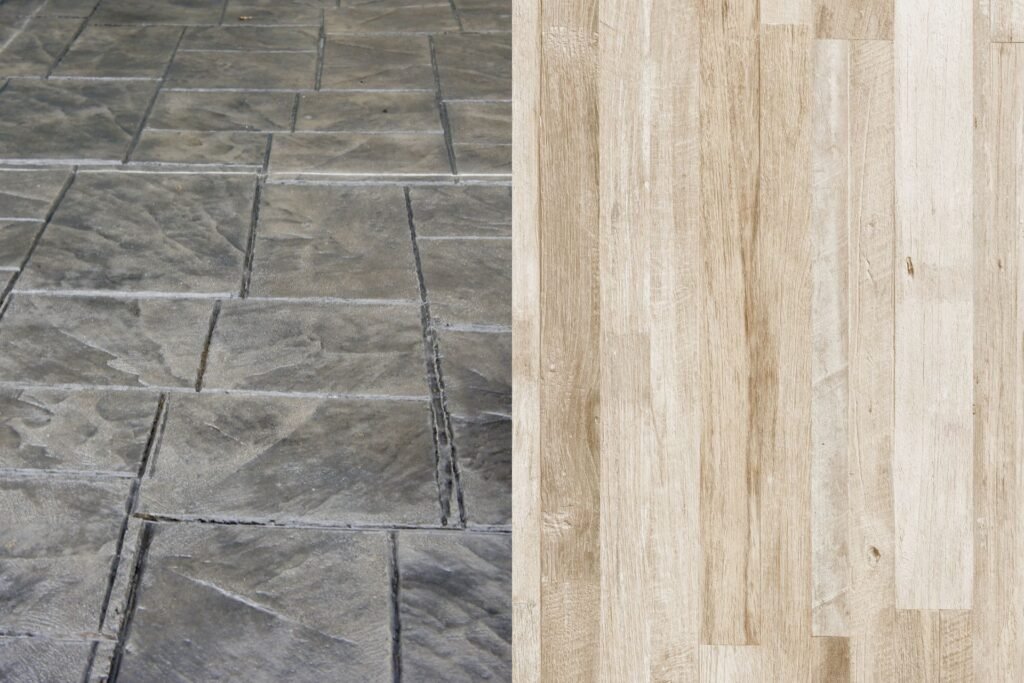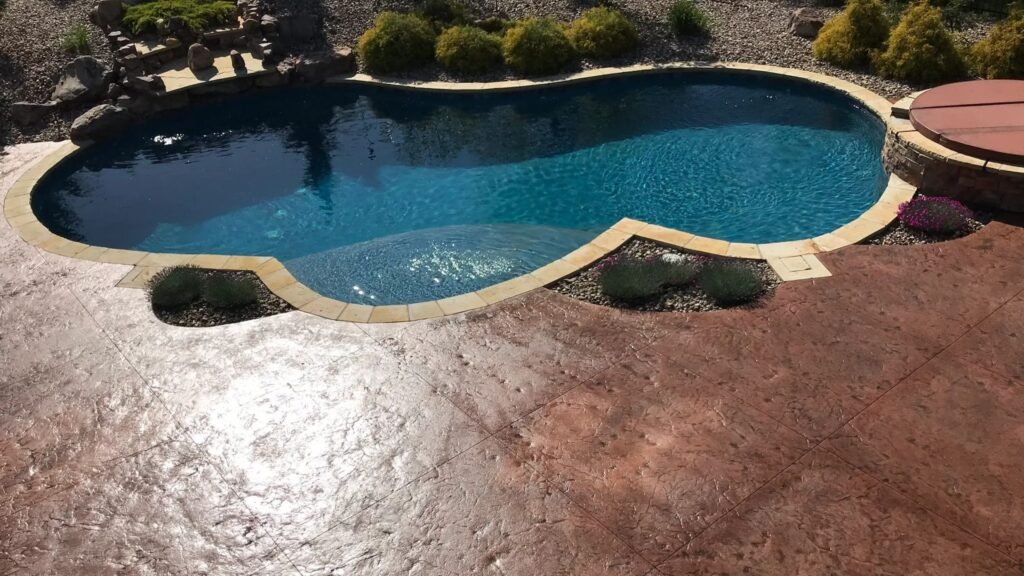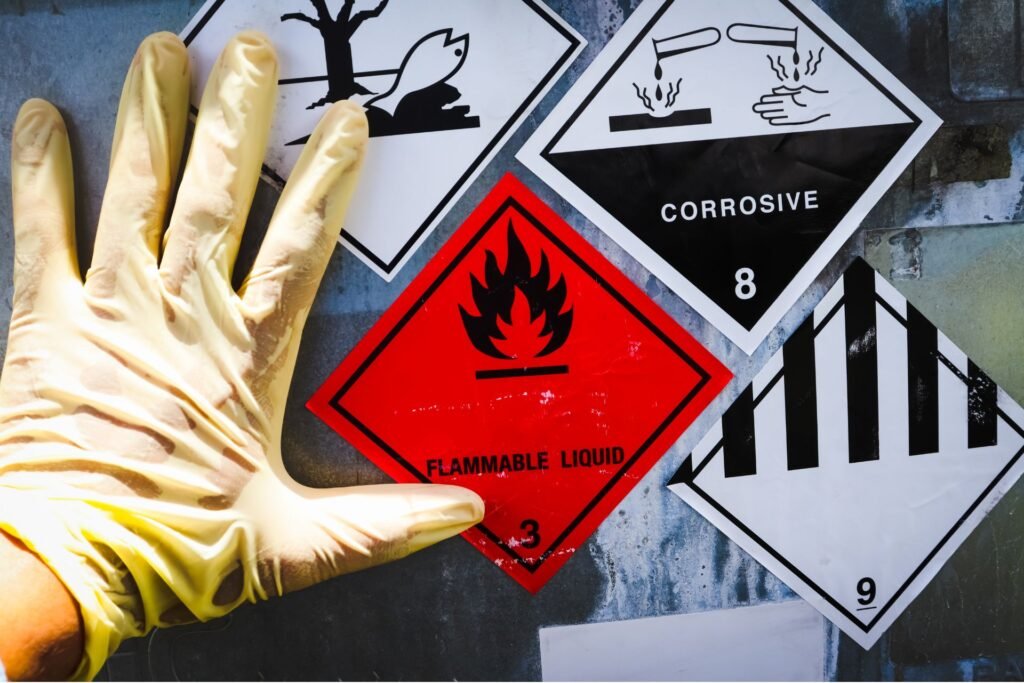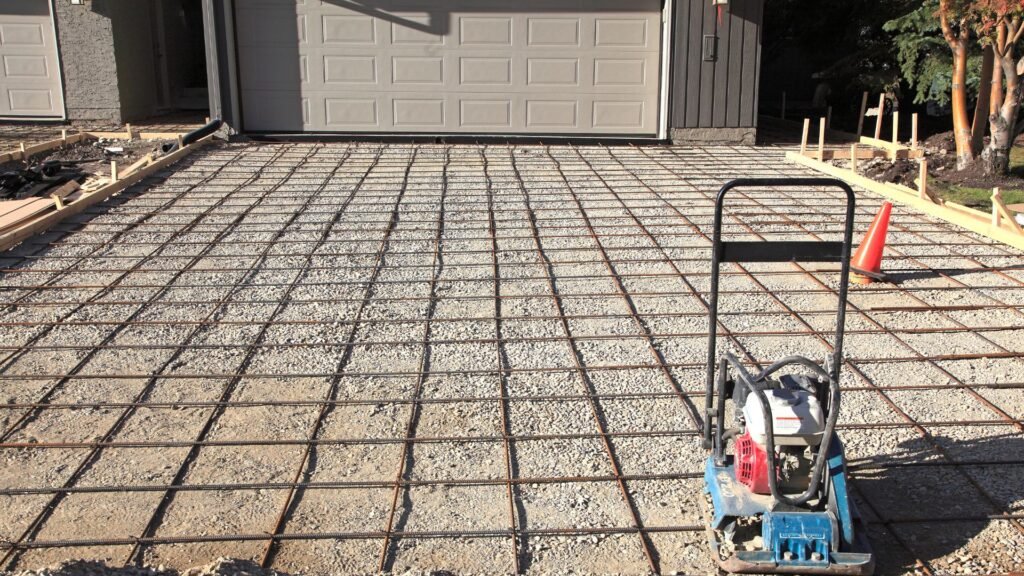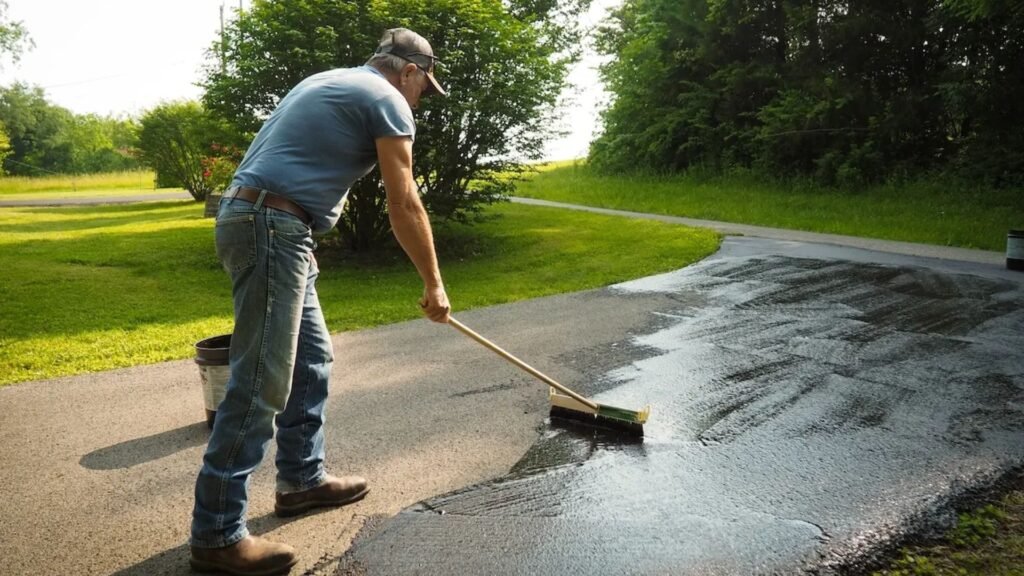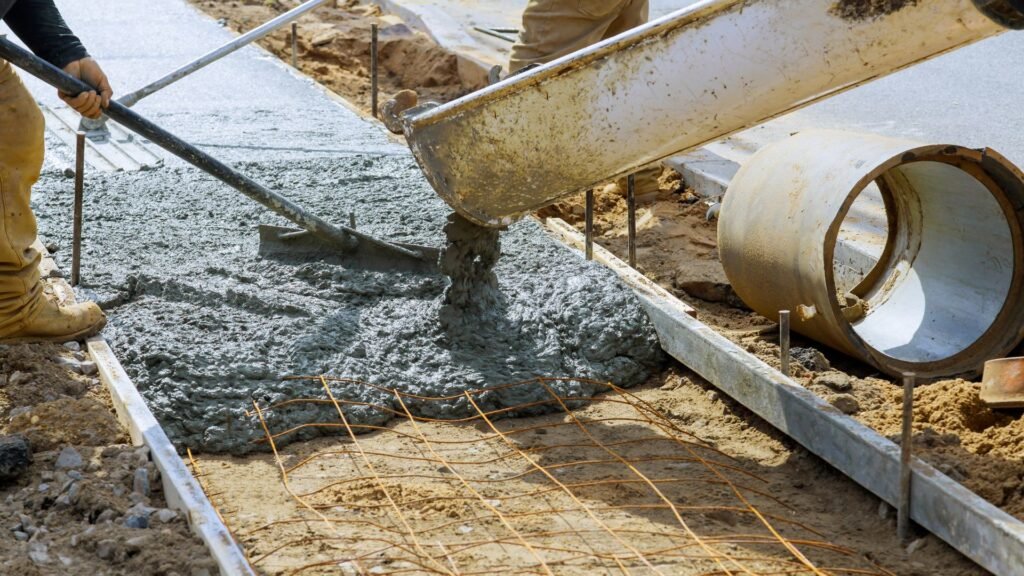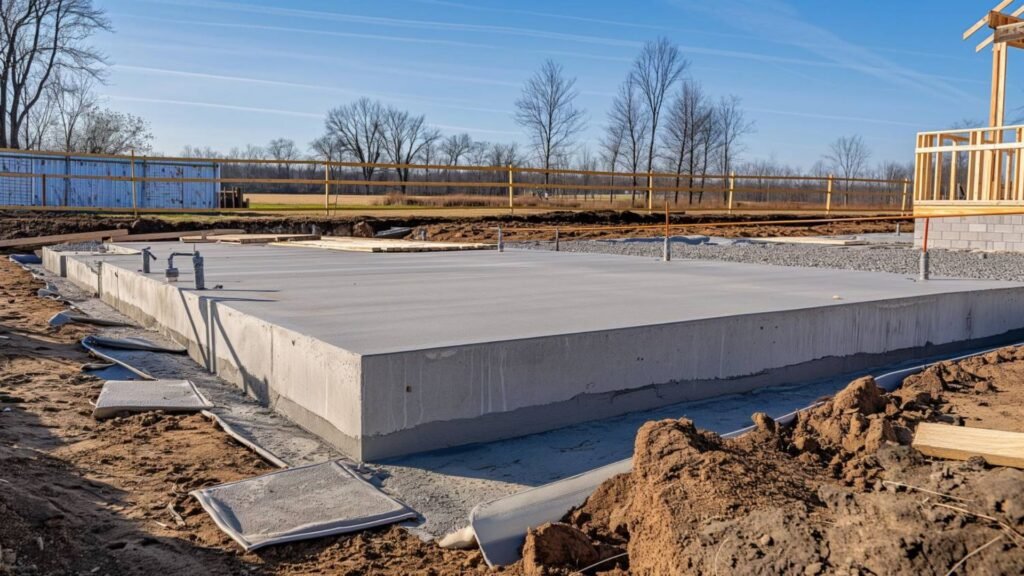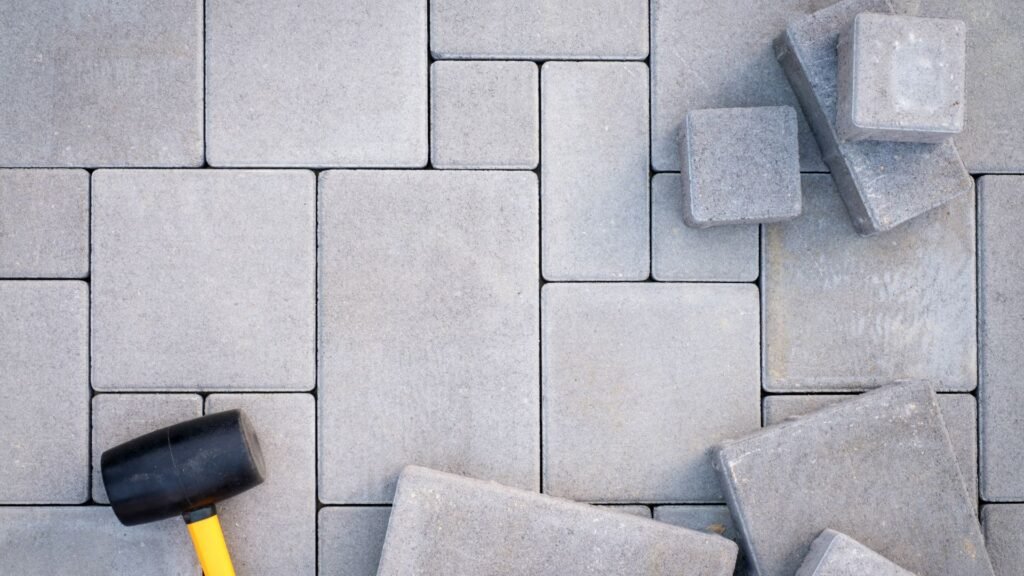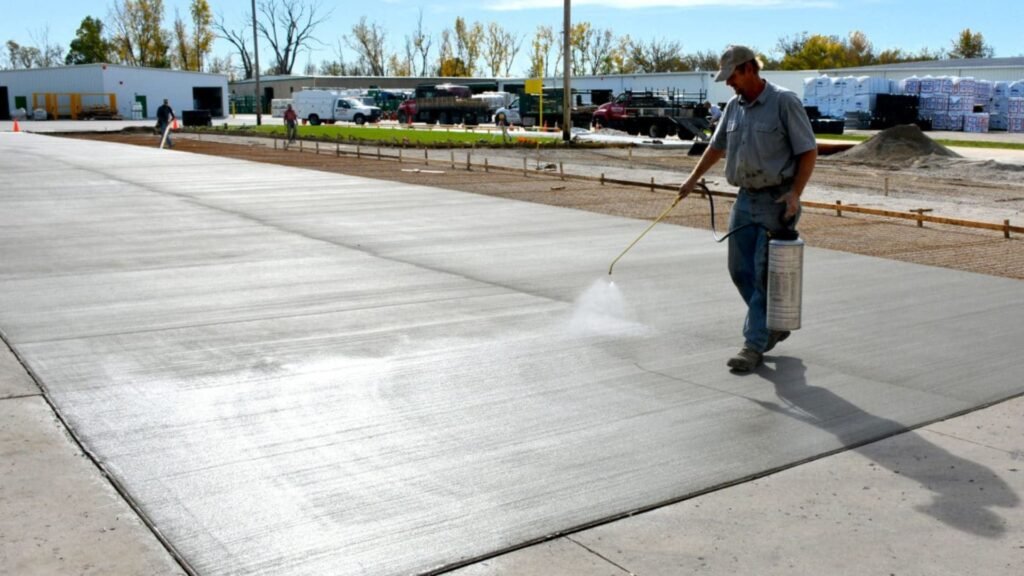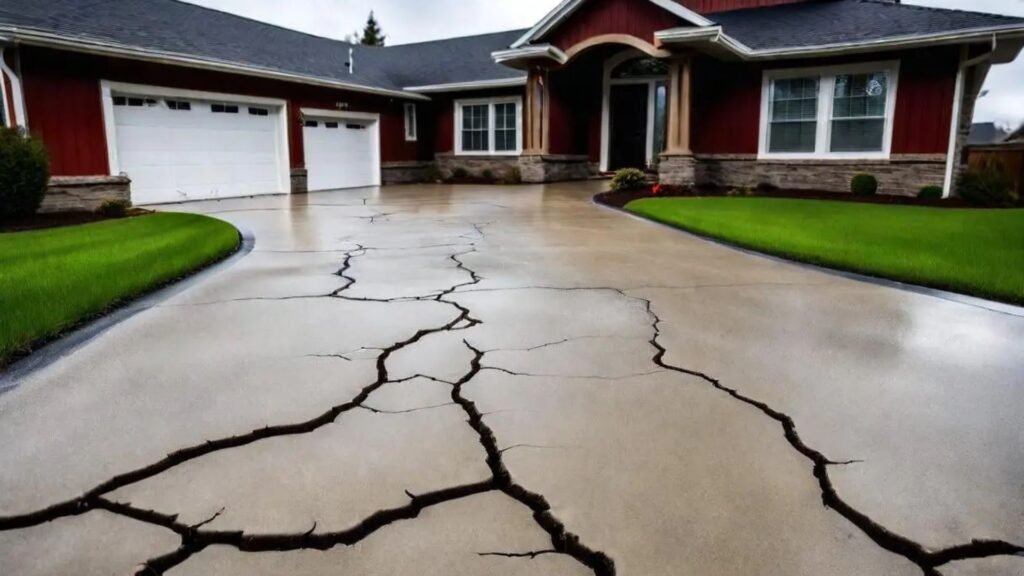Welcome to our guide on one of the most critical yet often overlooked aspects of constructing a concrete driveway: including joints. If you plan to install a new driveway or replace an old one, you’ve likely come across discussions about concrete joints and might wonder if they’re essential. The short answer is yes, they play a vital role in ensuring your driveway remains crack-free, durable, and visually appealing over the long term. In this post, we’ll explore why joints are essential, how they work, and what happens when they’re neglected, giving you the knowledge you need to make the best decision for your home’s driveway.
Concrete driveways should have joints to prevent cracking caused by natural expansion and contraction due to temperature changes. These joints, including control, expansion, and construction joints, help direct where cracks will form, protecting the driveway’s structure and longevity. Properly placed joints ensure a durable, long-lasting surface that minimizes the need for costly repairs.
Table of Contents
What Are Concrete Joints?
Concrete joints are essential components in any concrete structure, designed to manage the natural tendencies of concrete to expand, contract, and move over time. Without these joints, concrete would be highly susceptible to unsightly cracks and damage, which could compromise its structural integrity. These joints play a critical role in ensuring that concrete installations, whether for a driveway, sidewalk or building foundation, remain durable and functional for years to come.
Definition and Purpose
Concrete joints are planned gaps or separations within concrete structures, placed to allow controlled movement of the concrete as it experiences different stresses. Concrete is a material that expands when it heats up and contracts when it cools down. It also undergoes slight movements due to shrinkage as it cures. These natural processes, if left unchecked, can cause unsightly cracks and structural issues. Concrete joints serve as intentional weak points that guide these movements, ensuring the concrete can shift without causing uncontrolled damage. Their main purpose is to prevent random cracking and to ensure that the structural integrity and appearance of the concrete are preserved over time.
Types of Concrete Joints
There are three primary types of concrete joints, each serving a specific function based on the structure’s needs: expansion joints, control joints, and construction joints.
- Expansion Joints: These joints are designed to accommodate the expansion of concrete when it heats up. Concrete expands in all directions as temperatures rise. Without expansion joints, this expansion could cause significant cracking, buckling, or damage to the concrete structure. Expansion joints are especially crucial in large concrete installations such as highways, bridges, and large slabs, where thermal movement can be significant. By allowing space for the concrete to expand, these joints relieve the stress caused by thermal changes.
- Control Joints: Also known as contraction joints, control joints are strategically placed to manage the shrinkage that naturally occurs as concrete dries and cures. As concrete cures, it loses moisture, causing it to shrink slightly. This shrinkage can lead to cracking if it’s not controlled. Control joints create pre-planned weak spots in the slab, directing where cracks will form if they occur. This ensures that any cracks that develop will follow the joint lines, maintaining the structure’s overall appearance and integrity.
- Construction Joints: Construction joints are used when concrete pouring cannot be completed in a single operation. These joints are formed where two separate concrete pours meet. They provide a connection point between the two pours and are typically reinforced with dowels or rebar to ensure that the bond between the sections is strong. Construction joints are common in large-scale projects where continuous pouring is impractical, such as in bridges, parking structures, or large foundations.
Why Joints Are Essential
Concrete is a versatile and durable material, but it’s not immune to the effects of temperature fluctuations or the natural curing process. As concrete heats up, it expands, and as it cools, it contracts. Without proper joints, this constant movement would lead to significant and often unpredictable cracking. Moreover, as concrete cures, it shrinks, and this shrinkage can create stress within the material. If there are no designated weak points (joints), the stress could result in cracks forming in random, uncontrolled areas, which can ruin the aesthetic and structural integrity of the concrete.
Concrete joints provide a solution to this problem by offering predetermined points where these movements can occur safely. By incorporating expansion joints, control joints, and construction joints into the design of a concrete structure, engineers can effectively manage the stresses caused by temperature changes, curing, and other environmental factors. This not only extends the life of the concrete but also reduces maintenance costs and improves overall performance.
In conclusion, concrete joints are a vital aspect of any concrete installation. They help to prevent cracking, maintain structural integrity, and ensure the long-term durability of concrete structures. Whether it’s a large commercial project or a simple residential sidewalk, incorporating the right types of joints at the appropriate locations is key to ensuring a successful and lasting concrete installation.

The Role Of Joints In A Concrete Driveway
Concrete driveways are a popular choice for homeowners due to their durability and strength, but even the toughest materials are not immune to cracking and wear over time. One of the most important features that help maintain the integrity of a concrete driveway is the placement of joints. These joints play a crucial role in protecting the driveway from cracks, enhancing its longevity, and preventing shifting and damage. Below, we’ll break down why joints are essential for any well-designed concrete driveway.
Protecting Against Cracks
Concrete is a material that naturally expands and contracts due to temperature changes, moisture, and other environmental factors. Over time, these fluctuations create stress within the concrete slab, which often results in random cracking. Joints, specifically contraction or control joints, are strategically placed to alleviate this stress. By guiding where the concrete is most likely to crack, these joints create a controlled weakness that directs the cracking to specific locations, preventing unsightly and potentially damaging random cracks from forming across the surface.
Without these joints, the driveway could crack unpredictably, leading to costly repairs and diminished curb appeal. Therefore, properly placed joints act as a safeguard, controlling where cracking occurs so that the overall structural integrity of the concrete remains intact.
Longevity of the Driveway
In addition to controlling cracks, joints also play a key role in extending the lifespan of the driveway. When joints are placed correctly, they allow the concrete to move naturally without causing damage to the slab. This movement accommodation is particularly important in areas prone to extreme weather variations, where the concrete is subjected to freezing and thawing cycles or prolonged exposure to heat.
By providing a designated space for this movement, the joints help reduce internal stress, which not only minimizes cracks but also prevents larger structural issues down the road. As a result, the concrete driveway can maintain its form and function for many more years, reducing the need for expensive repairs or premature replacement.
Preventing Shifting and Damage
One of the biggest threats to a concrete driveway’s durability is the shifting and movement caused by soil expansion, freeze-thaw cycles, or heavy loads like vehicles. If the concrete slab is unable to handle these stresses, it can lead to uneven surfaces, sinking, or cracking. In colder climates, for instance, when water seeps into small cracks and freezes, it expands, causing the concrete to break apart.
Joints help mitigate these problems by allowing the driveway to “breathe.” Expansion joints, for example, are placed between the driveway and adjacent structures, like the garage or sidewalks, to absorb the expansion of the concrete during temperature fluctuations. This way, the slab can expand or contract without pushing against these rigid structures, preventing significant damage that might occur from shifting or pressure.
In essence, joints not only prevent the driveway from cracking but also protect it from the various types of damage that can result from shifting soils, moisture, and environmental pressures. This structural integrity is particularly important in regions with freeze-thaw cycles, as well-placed joints allow the concrete to handle these extreme changes without becoming compromised.
To sum it up, joints are essential to the longevity, durability, and structural health of a concrete driveway. They act as intentional weak points, guiding inevitable cracks and allowing the concrete to expand and contract without damaging the surface. By preventing random cracking, extending the lifespan of the driveway, and protecting it from shifting and environmental stressors, well-placed joints ensure that your concrete driveway will remain functional and aesthetically pleasing for years to come.

What Happens Without Joints In A Concrete Driveway?
When installing a concrete driveway, many homeowners overlook the importance of proper joint placement. Joints serve a critical purpose in managing the natural expansion and contraction of concrete, and without them, your driveway may face significant issues. Let’s dive into the consequences of not using joints in a concrete driveway and how it can affect your property in terms of aesthetics, functionality, and cost.
Risks of Cracking
Concrete, by nature, expands and contracts due to temperature changes. When joints are not included in a concrete driveway, this natural movement can cause significant stress within the slab. Since concrete is a rigid material, it doesn’t flex under pressure, leading to cracks.
Without pre-planned joints to control where the cracking happens, stress forces random cracks to appear in unpredictable areas. These cracks are not only unsightly but also can worsen over time, making your driveway look neglected and structurally compromised. The lack of joints essentially allows uncontrolled cracking, which can quickly degrade the integrity of the entire surface.
Impact on Aesthetic and Resale Value
A cracked driveway doesn’t just harm your property structurally; it also has a significant impact on curb appeal. When visitors or potential buyers see a driveway with visible cracks, it signals poor maintenance or inferior construction practices.
Cracks, especially large or numerous ones, detract from the clean, smooth appearance that a well-installed concrete driveway should have. Over time, these imperfections can also lead to stains, weeds growing through the cracks, or even water pooling, making the driveway look older than it is. A deteriorated driveway lowers your home’s aesthetic appeal, which can also affect the overall resale value. Homes with cracked, poorly maintained driveways are often less attractive to buyers, potentially leading to a lower sale price or longer time on the market.
Cost of Repairs
Neglecting to install proper joints doesn’t just lead to aesthetic issues; it can also cost you financially. Repairing a cracked concrete driveway can be an expensive and time-consuming process. If the cracks are minor, you may be able to patch them, but this is often a temporary solution. As cracks grow and multiply, you may eventually need to resurface or even replace the entire driveway, both of which are much costlier than preventative measures like installing control joints.
Additionally, cracks can create opportunities for water to seep into the base layers of the driveway, leading to further damage, such as erosion beneath the slab or freeze-thaw damage in colder climates. These issues can increase repair costs dramatically over time. By simply including joints during installation, you can avoid these expensive repairs and extend the lifespan of your driveway.
Skipping joints when pouring a concrete driveway might save some time or effort during installation, but it opens the door to a range of future problems. From random cracking and a decreased curb appeal to expensive repair costs, the consequences are simply not worth the risk. Properly placed joints ensure that your concrete driveway remains durable, attractive, and cost-effective over the long term.

How To Determine The Proper Spacing And Placement Of Joints
Ensuring the correct spacing and placement of joints in your driveway is crucial to maintaining its durability and preventing unsightly cracks. Joints allow concrete to expand and contract with temperature changes, moisture levels, and traffic loads. Here’s a breakdown of the key factors to consider when determining joint placement and some best practices to follow.
Factors That Affect Joint Placement
1. Driveway Size
- The size of your driveway plays a significant role in determining how many joints are needed. Larger concrete slabs are more prone to cracking because of the increased surface area, which creates more potential for stress and tension.
- In larger driveways, more joints are necessary to control the expansion and contraction that naturally occurs with changes in temperature or moisture. As a rule of thumb, joints should generally be placed no more than 10 feet apart, though larger slabs may require closer spacing.
2. Local Climate Conditions
- The climate in your area is a key factor in determining joint placement. In regions that experience extreme temperature fluctuations hot summers and cold winters concrete can expand and contract dramatically. This movement can lead to cracks if the driveway isn’t properly divided into smaller sections using joints.
- For areas with severe weather conditions, it is advisable to add joints more frequently to account for greater expansion and contraction. For instance, in colder climates where freezing and thawing cycles are common, joints should be spaced more tightly to prevent damage.
3. Concrete Thickness
- The thickness of the concrete also influences joint spacing. Thicker slabs have more mass and can withstand greater stress, which might allow for wider joint spacing. On the other hand, thinner slabs are more prone to cracking and, therefore, may require closer joints.
- Standard residential driveways typically use concrete that is 4 to 6 inches thick. For a 4-inch-thick driveway, joints are usually spaced 8 to 12 feet apart. However, thicker concrete can handle wider spacing, which reduces the number of joints required.
Best Practices for Joint Spacing
To ensure the longevity and appearance of your driveway, it’s important to follow some best practices regarding joint spacing. Whether you’re managing the project yourself or discussing it with a contractor, these guidelines can help:
- Follow a Grid Pattern: Joints should be placed in a uniform grid-like pattern to ensure the concrete sections are evenly divided. This not only improves the structural integrity of the driveway but also gives it a more aesthetically pleasing appearance.
- Don’t Skip Joints: Avoid the temptation to space joints too far apart to minimize their visibility. Proper joint spacing is essential for preventing random cracks, which can be far more noticeable and unsightly than planned joints.
- Consult Local Standards: Local building codes or guidelines may specify recommended joint spacing and placement for driveways in your area. Make sure to check these standards or consult with a knowledgeable contractor who is familiar with your region’s climate and conditions.
- Place Joints Near Stress Points: Areas such as corners, curves, or where the driveway meets another structure, like a garage or sidewalk, are prone to stress. Ensure joints are placed near these areas to prevent cracking.
- Use Proper Joint Fillers: Joints should be filled with a flexible, weather-resistant material that allows for the natural movement of the concrete while preventing water and debris from entering. This helps maintain the durability and integrity of the driveway over time.
By understanding how driveway size, local climate, and concrete thickness affect joint placement, you can ensure the proper spacing and layout of joints. This not only increases the lifespan of your driveway but also minimizes the risk of cracks, saving you money on repairs in the long run.

Different Types Of Joints And When To Use Them
When constructing a concrete driveway, understanding the different types of joints is crucial to ensuring its longevity and structural integrity. Properly installed joints prevent cracking and allow the concrete to expand and contract without causing damage. Here’s a detailed breakdown of the three main types of joints control joints, expansion joints, and construction joints and when to use each type.
Control Joints
Control joints, sometimes referred to as contraction joints, are essential in managing the natural cracking that occurs in concrete over time. As concrete dries and shrinks, it can form random cracks, which may weaken the overall structure. To control where these cracks occur, control joints are strategically placed to ensure the concrete cracks in designated spots, maintaining the aesthetic and durability of the driveway.
When to Use Control Joints
Control joints are most necessary in areas of the driveway that experience frequent thermal fluctuations, which cause expansion and contraction in the concrete. They should be placed at regular intervals, typically at distances no more than 12 to 15 feet apart, depending on the thickness of the slab. In smaller driveways, control joints can be spaced closer together to prevent irregular cracking. These joints are often installed during the finishing process of the concrete pour by either sawing or tooling the surface to create a weakened plane where the concrete will crack in a controlled manner.
Expansion Joints
Expansion joints play a critical role in allowing the concrete to expand and contract without causing structural damage. Unlike control joints, which manage cracking, expansion joints provide space for the concrete to expand as temperatures rise. Concrete, like many materials, expands when heated, and without expansion joints, this expansion can cause buckling or damage to nearby structures, such as garages, foundations, or other fixed objects.
Where to Use Expansion Joints
Expansion joints are especially important when your driveway is adjacent to buildings, retaining walls, or other fixed structures. These joints are typically placed where the driveway meets the foundation of a house, garage, or at large expanses of pavement. If you have a particularly large driveway, expansion joints may also be necessary within the slab itself to handle the natural movement of the concrete. Unlike control joints, expansion joints are filled with a flexible material like rubber, asphalt, or a pre-molded joint filler, which compresses as the concrete expands, preventing cracks or breaks.
Construction Joints
Construction joints are used when the concrete pouring process is done in phases, such as when the driveway is too large to pour in a single day or when different sections of the driveway need to be completed at different times. These joints help maintain the structural continuity of the concrete, ensuring that the sections poured at different times bond properly and function as a single, cohesive structure.
How to Use Construction Joints
Construction joints are typically placed where one concrete pour ends and another begins. These joints must be installed with care to avoid future issues with the alignment or strength of the driveway. Dowels or reinforcing bars are often used to connect the slabs, ensuring that the new section bonds to the old one without causing movement or displacement. Construction joints are particularly useful in large or multi-phase projects where a continuous pour is not possible. For the best results, these joints should align with control joints to maintain overall uniformity and prevent unplanned cracks.
Understanding the differences between control joints, expansion joints, and construction joints is crucial to the success of any concrete driveway project. Each type of joint serves a specific purpose whether it’s managing cracks, allowing for expansion, or accommodating construction phases, and when used correctly, they help extend the lifespan of the driveway and prevent costly repairs down the line. By planning and placing joints in the right areas, you can ensure that your driveway remains functional, safe, and visually appealing for years to come.

Common Mistakes In Installing Concrete Joints
When it comes to concrete installation, proper joint placement is crucial for the durability and longevity of the structure. Mistakes in joint installation can lead to severe issues like cracking, water infiltration, and compromised structural integrity. Below are some of the most common mistakes people make when installing concrete joints and how to avoid them:
Improper Joint Depth
One of the most frequent errors during concrete joint installation is cutting joints either too shallow or too deep. The purpose of a concrete joint is to control cracking by providing a predetermined weak spot where the concrete can safely crack. If the joint is cut too shallow, it won’t be effective at controlling where the cracks occur, potentially causing random cracking throughout the slab. On the other hand, cutting joints too deep can weaken the structural integrity of the slab itself, reducing its load-bearing capacity.
- Best Practice: Ensure that the joint depth is approximately one-quarter of the total thickness of the concrete slab. For example, if you’re working with a 4-inch thick slab, the joints should be cut about 1 inch deep.
Incorrect Spacing
Spacing joints incorrectly is another mistake that can lead to significant problems. Joints that are spaced too far apart can cause uncontrolled cracks to form between the joints, as the concrete will expand and contract with temperature changes. On the flip side, spacing joints too close together can result in unnecessary and excessive cracking, which detracts from both the appearance and the structural integrity of the slab.
- Best Practice: The general rule of thumb is to space joints 24 to 36 times the slab’s thickness. For example, if the slab is 4 inches thick, the joints should be spaced about 8 to 12 feet apart. This will ensure that the slab is allowed to naturally expand and contract without causing random cracking.
Failure to Use Joint Sealant
Neglecting to use of joint sealant is another critical mistake that can lead to premature concrete deterioration. Joints are the most vulnerable areas in a concrete slab, and if left unsealed, they can allow water, dirt, and debris to infiltrate. Water infiltration, in particular, accelerates cracking due to the freeze-thaw cycle in colder climates. Additionally, moisture can lead to corrosion of any embedded steel reinforcements, further weakening the concrete over time.
- Best Practice: Always apply a high-quality joint sealant after cutting the joints. This will prevent water and other debris from entering and causing damage, thus prolonging the life of the concrete. Choose a sealant that is flexible enough to accommodate the natural expansion and contraction of the slab.
Installing concrete joints may seem like a straightforward task, but even small mistakes can lead to big problems down the road. By ensuring proper joint depth, correct spacing, and sealing the joints, you can significantly enhance the durability and longevity of your concrete structures. Taking the time to avoid these common mistakes will save you time and money on future repairs and ensure a smooth, crack-free finish.

Do All Concrete Driveways Need Joints?
When it comes to constructing a durable and long-lasting concrete driveway, the topic of joints is crucial. Joints play a vital role in managing the natural tendency of concrete to crack as it dries, contracts, and expands due to temperature changes. Without proper joints, even a high-quality concrete surface can develop random cracks that compromise both its appearance and structural integrity.
Small vs. Large Driveways
The size of the driveway significantly influences the need for joints. Smaller driveways, typically those less than 10 feet in length or width, might require fewer joints compared to larger driveways. In some cases, depending on the shape and design of the smaller driveway, contractors may even skip joints altogether.
This is because small sections of concrete have less surface area that is subjected to temperature-induced expansion and contraction. With less stress, the concrete in smaller driveways is less prone to cracking, making it possible to avoid excessive jointing. However, it’s important to note that every driveway is unique, and factors like soil conditions and climate may still necessitate the inclusion of at least a few control joints, even in smaller projects.
On the other hand, larger driveways especially those over 10 feet in any direction require more joints. As the surface area increases, so does the potential for stress points and cracking. The general rule of thumb for larger driveways is to install joints in a grid-like pattern, with spacing between joints being roughly 8 to 12 feet apart. Properly placed joints help guide any cracks that may occur, ensuring they happen along the joints rather than in unsightly random locations.
Alternatives to Joints
While joints are the most reliable method to prevent random cracking, there are alternatives that some contractors may consider. One such alternative is fiber reinforcement, where tiny fibers are mixed into the concrete before it’s poured. These fibers, typically made of steel, glass, or synthetic materials, enhance the concrete’s tensile strength and can help reduce the likelihood of cracks forming.
However, fiber reinforcement should not be viewed as a replacement for control joints but rather as a supplement. While it can minimize small surface cracks and improve the overall durability of the driveway, it doesn’t eliminate the stresses caused by expansion and contraction. In many cases, relying solely on fiber reinforcement without joints can result in unpredictable cracks that detract from the driveway’s appearance.
Another alternative is the use of expansion joints, which are different from control joints. Expansion joints are placed where the driveway meets other structures, like sidewalks or garages, and allow for independent movement between the surfaces. While important, expansion joints alone won’t fully protect against cracks throughout the driveway’s surface area.
In conclusion, even though there are alternatives like fiber reinforcement, nothing quite matches the proven reliability of properly placed joints in concrete driveways. Whether the driveway is small or large, joints help manage cracking in a controlled, aesthetically pleasing way. For homeowners looking for a long-lasting and visually appealing concrete driveway, the strategic use of joints is essential to ensuring the surface stands the test of time.

Maintenance Tips For A Concrete Driveway With Joints
Maintaining your concrete driveway is crucial for ensuring its longevity, especially when it comes to the joints. These joints, placed strategically during installation, allow the concrete to expand and contract without cracking. However, to keep your driveway in peak condition, it’s important to follow a few essential maintenance practices.
Sealing the Joints
One of the most effective ways to maintain your driveway is by sealing the joints. Properly sealed joints prevent water from seeping into the concrete, which can cause damage over time. Water infiltration, especially in colder climates, can lead to freeze-thaw damage.
To maintain sealed joints
- Choose the right sealant: Use a high-quality polyurethane or silicone-based sealant that can withstand temperature fluctuations.
- Inspect regularly: Check the sealant every year, especially before winter, and reapply if necessary to ensure that it’s intact and no gaps have formed.
- Clean before sealing: Always clean out debris from the joints before resealing, as dirt and small particles can reduce the effectiveness of the sealant.
Proper sealing will not only protect against water damage but will also prevent debris from collecting in the joints, reducing the risk of cracks and other structural issues.
Monitoring for Shifts or Cracks
Regular inspections of your driveway are key to identifying any early signs of shifting or cracking. Over time, even well-maintained joints can experience wear, and noticing problems early can save you from costly repairs.
Here’s how you can monitor your driveway effectively
- Inspect every few months: Walk around your driveway every season, looking closely at the joints and the concrete slabs for any signs of cracking, shifting, or uneven surfaces.
- Check after extreme weather: After heavy rain, snow, or freezing conditions, pay extra attention to the joints, as these conditions can cause the concrete to shift or expand unexpectedly.
- Take action quickly: If you notice small cracks around the joints, it’s important to fill them immediately to prevent them from spreading or worsening over time.
Early detection is vital. Addressing shifts or cracks when they’re small will help maintain the overall structure and appearance of your driveway, preventing more extensive damage down the road.
Seasonal Care for Freeze-Thaw Cycles
Concrete driveways, especially in regions with extreme seasonal changes, are highly susceptible to freeze-thaw cycles. This natural process can be tough on your driveway joints, causing expansion and contraction that leads to cracking if not properly managed.
To protect your driveway from seasonal damage
- Prepare for winter: Before the first freeze, ensure that the joints are sealed and that any cracks or issues have been repaired. This will minimize the risk of water entering and freezing inside the concrete, which can lead to major damage.
- Use ice melt products cautiously: While de-icing products can be helpful, avoid those that contain harsh chemicals like ammonium sulfates or nitrates, which can deteriorate the concrete. Opt for products that are safe for use on concrete surfaces.
- Clear snow and ice promptly: Regularly remove snow and ice from your driveway to prevent moisture from sitting on the surface and seeping into the joints.
By taking these steps, you can minimize the damage caused by the freeze-thaw cycle and keep your driveway looking and functioning like new.
Proper maintenance of the joints in your concrete driveway is essential for extending its lifespan and preventing costly repairs. By sealing the joints, regularly inspecting for shifts or cracks, and taking extra care during seasonal changes, you can keep your driveway in excellent condition for years to come. Follow these tips to ensure that your driveway remains both functional and aesthetically pleasing, no matter the season.

Hiring A Professional For Your Concrete Driveway
When it comes to installing a concrete driveway, hiring a professional contractor is one of the most critical decisions you’ll make. While it may be tempting to try and tackle the job yourself or go with a cheaper, less-experienced contractor, the complexity of concrete work requires the expertise of a skilled professional. Here’s why:
Why Expertise Matters
Concrete driveways are more than just slabs of concrete. Proper installation involves several crucial steps, with joint placement being one of the most important. Joints allow the concrete to expand and contract with temperature changes, preventing cracks and other damage. A contractor with experience understands how to properly space and place these joints to ensure your driveway remains in great condition for years to come.
A professional will also be knowledgeable about soil conditions, drainage requirements, and the best materials to use, all of which can greatly impact the durability and longevity of your driveway. In short, hiring someone who knows what they’re doing can save you from costly repairs down the road.
Questions to Ask Your Contractor
When selecting a contractor for your concrete driveway, it’s essential to ask the right questions. This will not only ensure that they are experienced, but it will also give you peace of mind knowing your project is in capable hands. Here are some key questions to consider:
1. How will you handle joint placement?
Ask the contractor about their plan for placing joints. Properly spaced joints are critical to preventing cracks. A professional should be able to explain how they’ll place them and why it’s essential for the longevity of your driveway.
2. What type of sealing process do you use?
Sealing the concrete protects it from moisture, weather, and stains. Make sure your contractor uses a high-quality sealant and inquire about how often it will need to be reapplied.
3. Can you provide references or examples of past work?
Any reputable contractor should have a portfolio or a list of past clients who can vouch for the quality of their work. Don’t hesitate to ask for references or to see completed projects.
4. What precautions will you take to ensure proper drainage?
Improper drainage can lead to water pooling, which can cause the concrete to crack or become uneven. A professional should have a plan to ensure that water is directed away from your driveway.
5. What kind of warranty do you offer?
Most contractors should offer a warranty on their work. This gives you an extra layer of protection in case issues arise after the installation is complete.
By hiring a professional with the right experience and asking these important questions, you can ensure that your concrete driveway is built to last, saving you both time and money in the long run.

FAQs: About Should There Be Joints In A Concrete Driveway
What are concrete joints, and why are they important for a driveway?
Concrete joints are predetermined spaces or cuts in the driveway that allow the concrete to expand, contract, or move without cracking. They help control where cracking occurs, ensuring the driveway stays structurally sound and lasts longer.
What types of joints are used in concrete driveways?
The main types of joints in concrete driveways include control joints, expansion joints, and construction joints. Control joints help manage cracking, expansion joints accommodate the driveway’s movement, and construction joints are used when the concrete is poured in sections.
Can I install a concrete driveway without joints?
While it’s technically possible, it’s not advisable. Without joints, your driveway is far more likely to develop random cracks over time due to natural expansion and contraction. Joints help manage and minimize such issues.
How far apart should concrete joints be placed in a driveway?
Joint spacing typically depends on the size and thickness of the driveway, but a general guideline is to space them every 10 to 12 feet. This distance can vary based on climate conditions and the specifics of your installation.
What happens if joints aren’t placed correctly in a driveway?
Incorrectly spaced or improperly cut joints can lead to random cracking, which compromises the driveway’s strength and durability. Over time, this can result in the need for costly repairs or even replacement.
Are there alternatives to using joints in a concrete driveway?
While there are alternatives like fiber-reinforced concrete, joints remain the most effective method for controlling cracking in a traditional concrete driveway. Fibers can help reduce surface cracking but won’t replace the structural benefits of properly placed joints.
Do I need to seal the joints in my concrete driveway?
Yes, sealing the joints is important to prevent water from seeping into them, which can lead to freeze-thaw damage, erosion, or the growth of weeds and grass. A good sealant will protect your driveway and extend its lifespan.
How long do concrete joints last?
With proper maintenance, including regular cleaning and resealing, concrete joints can last for many years, often as long as the driveway itself. However, the sealant may need to be reapplied periodically depending on wear and exposure to the elements.
Can I repair cracks in a driveway that doesn’t have joints?
Yes, cracks in a driveway can be repaired, but the repair might only be a temporary solution if joints were not initially used. Without proper joints, the concrete will continue to crack in response to temperature changes and movement.
How can I ensure my driveway contractor installs the joints correctly?
Before hiring a contractor, ask them about their process for installing joints, including the type, placement, and sealing. Request to see examples of past work and ensure they follow industry best practices for joint spacing and depth based on your driveway’s size and climate.
Conclusion
Incorporating joints into a concrete driveway is crucial for preventing cracks, enhancing durability, and maintaining its overall aesthetic appeal. By allowing controlled movement in the concrete, joints help manage natural expansion and contraction due to temperature changes, thus extending the lifespan of the driveway. Whether you’re planning a new installation or repairing an existing one, it’s essential to prioritize proper joint placement to ensure the structure remains strong and visually appealing over time. To achieve the best results, consulting with a professional contractor is highly recommended, as they can provide expert guidance on joint placement and ensure that your driveway is built to last.
About the Author:
Mike Veail is a recognized digital marketing expert with over 6 years of experience in helping tradespeople and small businesses thrive online. A former quantity surveyor, Mike combines deep industry knowledge with hands-on expertise in SEO and Google Ads. His marketing strategies are tailored to the specific needs of the trades sector, helping businesses increase visibility and generate more leads through proven, ethical methods.
Mike has successfully partnered with numerous companies, establishing a track record of delivering measurable results. His work has been featured across various platforms that showcase his expertise in lead generation and online marketing for the trades sector.
Learn more about Mike's experience and services at https://theleadguy.online or follow him on social media:



